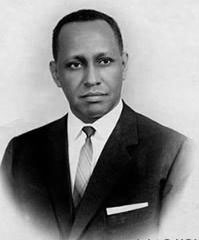
The Majeerteen is a prominent Somali sub-clan of the Harti, which falls under the Darod clan. Traditionally, they inhabit extensive territories in the Bari, Nugaal, and Mudug regions of Somalia, spanning from Bosaso to Garacad, mainly in Puntland state. Additionally, Majeerteen populations are present in southern towns such as Kismayo.
The Arap or Arab clan is a major Northern Somali clan of the wider Isaaq clan family. The Arap predominantly live on the middle and southwest side of Hargeisa and in the Baligubadle district Hawd region) of Somaliland, with its capital Baligubadle being an exclusively Arap territory. The territory of the clan extends to Ethiopia, in the area of Faafan, gursum, dhagahle. The Abdalle Arab, a sub-clan of the Arap clan is based in the Togdheer, Sahil. The Celi Arab, a sub-clan of the Arap clan is based in Maroodi Jeex Hargeisa Muuse celi arab living also Bakool South West State of Somalia Rabdhure Elbarde, They also live Fafan Zone Gursum, Somali Sheekh cismaan Arab based in Nogob Zone Jarar Zone regions.

The Hawiye is the largest Somali clan family. Members of this clan traditionally inhabit central and southern Somalia, Somaliland, Djibouti, Ethiopia and Kenya. They are also the majority in the capital city, Mogadishu.

The Marehan is a Somali clan, which is part of one of the largest Somali clan families, the Darod.
Abgaal is a sub-clan of the Hawiye and the even larger Samaale clan. It is one of the major Somali clans and has produced many prominent historical Somali figures including 3 presidents, and the father of the Somali military.
Ayr, Muhammad Madarkicis Hiraab is a Somali clan, part of the larger Habar Gidir Hawiye clan. The Ayr clan is the eldest Habargidir sub-clan and is the largest Habargidir sub-clan numerically. The Ayr clan have a rich history in Somali society and has played a fore role in shaping Somali history and national politics. They reside in 6 out of the total 18 regions of Somalia but are primarily found in the central region of Somalia - Galgaduud region which they hold a monopoly over and is considered their heartlands. They are considered the most powerful sub-clan in central and southern Somalia controlling important sections of the country and have a great influence over the nation's capital Mogadishu.

The Habar Gidir is a major subclan of the Hawiye. The clan has produced some prominent Somali figures, including the first Prime Minister of Somalia Abdullahi Issa Mohamud, and Somalia's fifth President Abdiqasim Salad Hassan.

The Mursade are a Somali subclan, part of the Karanle clan, which is itself a part of the larger Hawiye Tribe. They primarily reside in the central regions of Somalia, with a particular focus on the Galgaduud, Mudug, Middle Shabelle, Lower Shabelle and Banadir regions, among others. The Murusade clan can trace their roots back to the earliest inhabitants of Mogadishu, the capital city of Somalia. It holds a position of great significance and influence within the urban landscape. Their presence can be felt in various spheres of life in the metropolis, attesting to their prominence and contribution to the socio-cultural fabric of the city.
The Hawadle are a Somali clan who traces its descent from Meyle, one of the sons of the Samaale clan. The Hawadle, as well as many other Somali clans from Samaale.
The Banaadiri people are a people group in Somalia. Banaadiris largely inhabit Somalia's southern coastline.
The Sheekhaal (var. Sheikhaal, also known as Fiqi Cumar is a clan that inhabits Somalia, Ethiopia, Djibouti and with considerable numbers also found in the Northern Frontier District in Kenya.

The Bimaal or Bimal, is a sub-clan of the major Dir clan family. This clan is widely known for leading a resistance against the colonials in southern Somalia for decades which can be compared to the war of the Sayyid in Somaliland. The Biimaal mainly lives in southern Somalia, the Somali region of Ethiopia, which their Gaadsen sub-clan mainly inhabits and in the NEP region of Kenya.
The Reer Nuur, also known as Nuur Yoonis, is a northern Somali clan, a sub-division of the Makahiil sub-clan of the Gadabuursi clan family.
The Surre, is a Somali clan, a sub clan of the major Somali Dir clan, The Surre inhabit in central and southern Somalia. And also can be found in Somaliland, Ethiopia and Kenya.
Qubeysقبيس سر در is a branch of the Surre subclan of the Somali people, which is in turn a branch of the greater Mehe Dir tribe. Qubeys is brother to Abdalle Surre Dir. Surre
Sheekhaal Gendershe also known as Reer Aw Garweyne are a Benadiri clan, mainly from the southern coastal towns of Gendershe, Marka and Mogadishu. The Gendershe have also established communities in the hinterlands in towns such as Afgooye and the villages surrounding it due to trading and farming.
The Sa'ad Musa or Saad Musa is a northern Somali clan. Its members form a part of the Habr Awal sub-clan of the Isaaq clan family. The Sa'ad Musa traditionally consists of nomadic pastoralists, coastal people, merchants and farmers. The clan inhabits Somaliland, including Maroodi Jeex, and Sahil as well as Djibouti, the Somali Region of Ethiopia, Kenya and Tanzania.
The Mohamoud Garad is a Somali clan. Its members form a part of the Dhulbahante, a sub-division of the Harti/Darod clan-family. The clan is divided into three main sub-clans ― namely the Jama Siad, the Ugaadhyahan and Omar Wa’eys.
The Farah Garad or the Garad Farah is a Somali clan which is part of the Dhulbahante clan-family, a sub-division of the larger Harti/Darod clan. The Farah Garad are divided into two sub-clans — Yassin Garad and Abdalla Garad. Abdalla has four clan eponyms, Ahmed Garad, Mohamed Garad (Baharsame), Guled Garad (Barkad) and Ali Garad. They are largely significant in Sool and Togdheer regions of Somalia, and Dollo Somali region of Ethopia.

Wa'daan is a sub-clan of the Hawiye and the even larger Samaale clan. They are part of the Gorgaarte subclan of the Hawiye clan.






